15 Interesting Facts About the Ancient Pyramids
The pyramids are an architectural phenomenon. Comparable to the ancient form
of a skyscraper, these enormous buildings served a number of functions both
ceremonial and religious in nature. They are shrouded in a number of mysteries.
People do not entirely understand them. In some cases, we are not even certain
how they built them, given the technology and tools available. Learning about
the pyramids does not really answer most of these questions, but it does open
the door to some very stimulating conversations.
Egypt's Great Pyramids:
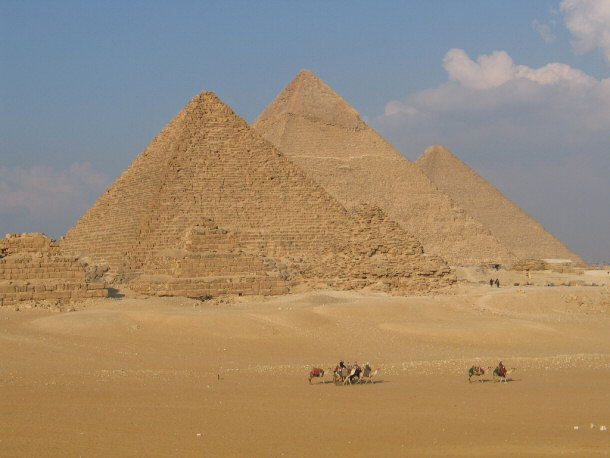
15) Egypt Is Not The Only Country With Pyramids
When people say the word
"pyramids," they automatically think of the Pyramids of Giza and the Great
Pyramid found in the Cairo, Egypt (shown above). According to "The Great Pyramid ,"
these structures have become iconic just by name. However, there are
hundreds of other pyramids scattered throughout the world. They can be found in
South America as well as in Asia and Africa. ,"
these structures have become iconic just by name. However, there are
hundreds of other pyramids scattered throughout the world. They can be found in
South America as well as in Asia and Africa.
Karima Pyramids in Northern Sudan Constructed in 8th
Century BCE:
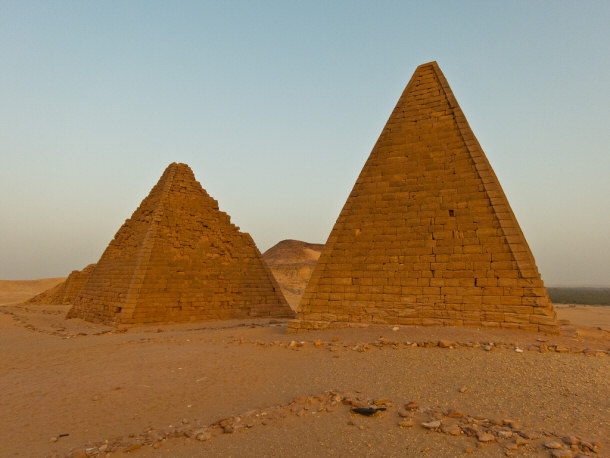
If you expand this definition to
include mound pyramids, then pyramids can be found on every continent in the
world except Antarctica. It's unclear how many
pyramids there really are in the world because many of the smaller ones would
have likely been destroyed through erosion and vandalism.
Ko Ker Temple Pyramid in Cambodia:
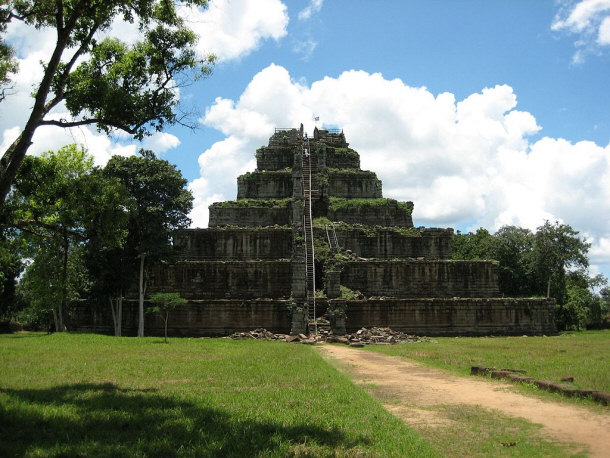
By thomaswanhoff
via Wikimedia Commons
The speculation is
that it may have numbered in the thousands. Ancient pyramids the size of the
Great Pyramid, have been weathered by storms and time having been further shaped
by erosion.
14) The United States Has Its Own Pyramid
This is one of those questions that
comes up on television programs like Jeopardy and other trivia television
programs, and the answer is not the
Great Pyramid Replica in Las Vegas, Nevada.
That doesn't even show up on the Pyramid Map. Monk Mound is known as the Great
Pyramid of the United States. It can be found near Collinsville which is outside
of St. Louis, Illinois.
Monk's Mound is a Pre-Columbian Mississippian Culture
Earthwork:
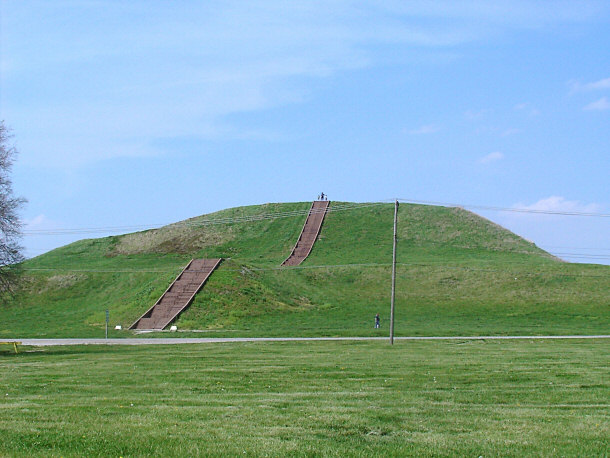
By Skubasteve834
via Wikimedia Commons
It is the largest mound pyramid in the world, and it is
also considered one of the largest surviving earthworks from ancient times.
View From Atop Monk's Mound:
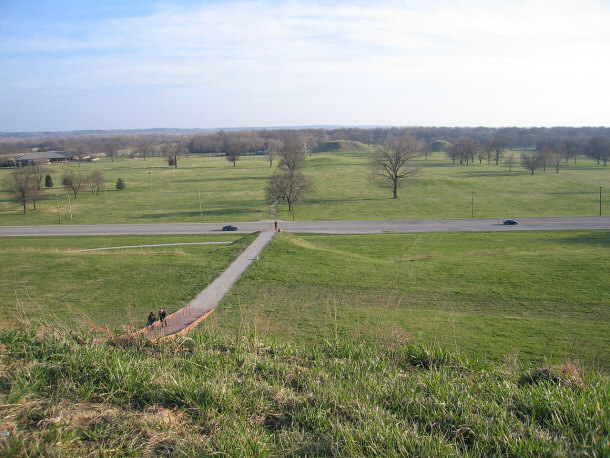
By Skubasteve834
via Wikimedia Commons
Monk Mound is one of the most impressive
feats of ancient architecture worldwide. The soil used to form the mound differs
significantly from the soil readily available in the area. The architects of this mound actually went abroad to bring back
the vivid soils that make up the mound itself. The soil colors turn from cool
blues and grays to vivid reds and browns as well as some white, black, and
orange soils. All of these are layered in intricate designs along with limestone
slabs, and also posts made from red cedar and cypress are layered throughout the
earth.
Schematic of a Platform Mound:
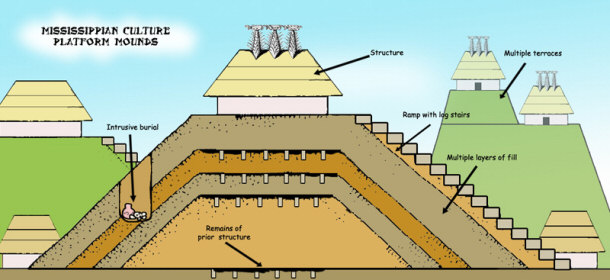
By Herb Roe
via Wikimedia Commons
Experts estimate that it would have taken over dozens of years to
complete this monument. It dates back to the Chalcolithic Copper Age of North
America. Numerous mysteries surround this pyramid as well as the period, as
experts are not certain which tribe constructed it. All of the surrounding
Indian tribes have legends and myths that involve the mound. There are even
myths and legends regarding its formation, but none of these have been verified
scientifically. The purpose is also unclear.
13) The Great
Pyramid is One of the Most Popular Center Points for Alien
Conspiracy Theorists
 No
one denies that the Great Pyramid is an architectural wonder that defies
explanation. According to the History Channel, the pyramid was constructed with
such precision that even modern technology cannot replicate it's precision with
the same building materials. Additionally, the Great Pyramid has exceptionally
precise geometric relationships that are consistent throughout the entire
structure and schematic design. While some scientists and historians have tried
to come up with explanations for how the ancients could have constructed the
Great Pyramid, some people have chosen a rather surprising response; aliens. No
one denies that the Great Pyramid is an architectural wonder that defies
explanation. According to the History Channel, the pyramid was constructed with
such precision that even modern technology cannot replicate it's precision with
the same building materials. Additionally, the Great Pyramid has exceptionally
precise geometric relationships that are consistent throughout the entire
structure and schematic design. While some scientists and historians have tried
to come up with explanations for how the ancients could have constructed the
Great Pyramid, some people have chosen a rather surprising response; aliens.
According to "Great Pyramid Interesting Facts," the Great Pyramid is one of
the most popular center points of Alien Conspiracy Theory. It even beats out
Area 51 and Stonehenge as far as an intergalactic most popular destination list
goes. While proponents of this belief vary in what they think the Great Pyramid
is for, they all seem to believe that aliens either forced humans to build the
Great Pyramid or that aliens themselves built the great pyramid.
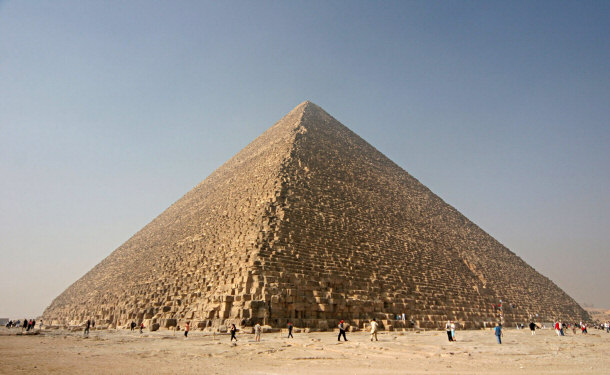
By Nina
via Wikimedia Commons
Part of this
belief comes from the sheer enormity of the pyramid in addition to its extremely
precise measurements and engineering execution. It has more than two million
stone blocks, and each one weighs a minimum of two tons.
How These Huge Stones Were Moved Into Place Fuel Conspiracy
Theories:
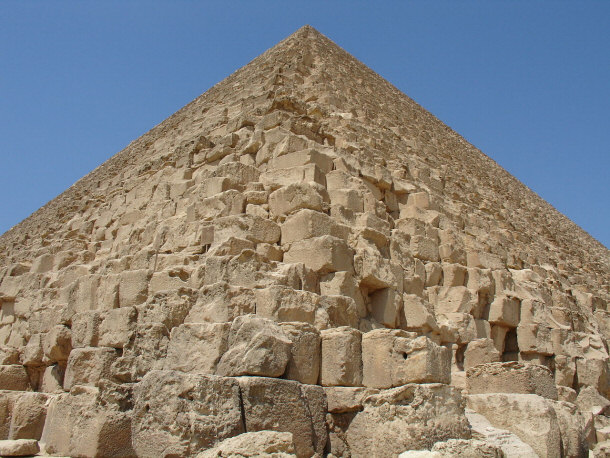
By Mgiganteus1
via Wikimedia Commons
Many were closer to 30
tons, and a few are estimated at being up to 70 tons! Although various theories
have been proposed, scientists and engineers still are uncertain how this feat
was accomplished. Additionally the mortar of
the Great Pyramid has been analyzed more carefully. The chemical origin is
known, but it cannot be reproduced even in modern times with modern synthesizing
techniques. This still boggles the mind of many engineers and physicists.
12) China Has the Most Pyramids in the World
The Chinese pyramids are not
nearly as well known as the Egyptian pyramids may be, but China actually has
more pyramids than all of Egypt. The Chinese pyramids can be found scattered all
throughout China. Among the many, the most famous is the Mausoleum of First Quin
Emperor. This is within walking distance of the location of the Terra Cotta
Warriors. Most of these pyramids can be linked to the particular dynasties
during which they were constructed. The Zhou, Quin, Han, Yangling, Xining, and
Qingjai contributed the most to the Chinese pyramids.
Mausoleum of Han Yang Ling near Xian:
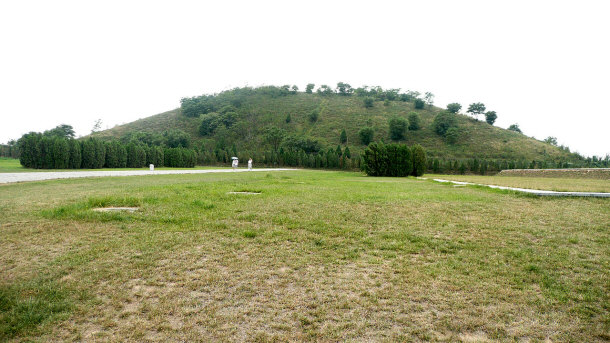
Traditionally, these pyramids are flat topped and more similar in structure
to the Teotihuacan Pyramids north of Mexico City, Mexico:
Pyramid of the Sun at Teotihuacan Outside of Mexico City, Mexico:
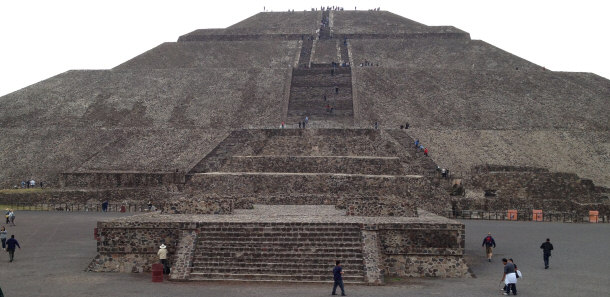
The structure of the
pyramids in China are not as much of a mystery as the Egyptian ones when it
comes to the origins of their construction. Primarily, Chinese pyramids are
earth based rather than stone based. Erosion and farming techniques have
destroyed the exteriors, taking them down primarily to the foundational clay.
Whether they were significantly decorated beforehand is unknown, but the general
belief regarding the exteriors were that they were not decorated and simple. The
interiors have not been well documented by members of the scientific community,
as the Chinese government forbids archaeological expeditions – even ones headed
by Chinese nationals.
11) Pyramids Were Not Just Big Burial Sites
Pyramids were developed for a
number of reasons. Most of the time, the central purpose of the pyramid was
religious in nature. In ancient Egypt, the pyramids were built as spiritual
conduits between the gods and earthly creatures. Part of their purpose was to
allow the pharaohs and their families to make it safely into the afterlife. It
was also to allow the gods to reach the Earth and commune with the people and
priests. Additional purposes behind the
construction and the upkeep of the pyramids was to ensure that the gods remained
pleased with the people and the Pharaohs' families.
Opening of the Mouth Ceremony - Designed to Re-animate the
Departed:
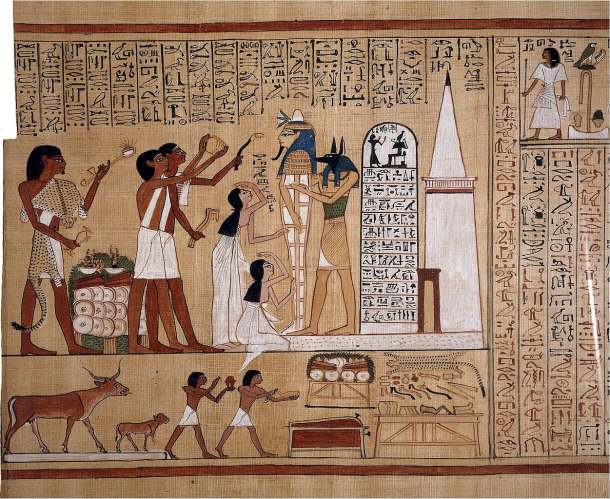
The mystery remains as to
which deities were intended to be pleased. Unlike the Greek deities who were
associated with specific temples, the Egyptian pyramids were not. Numerous icons
and symbols of the gods have been found within the chambers, but they are not
clear what the purpose of these icons were. They are the subject of great debate
and historical conversation.
Weighing of the Heart Scene from the Book of the Dead:
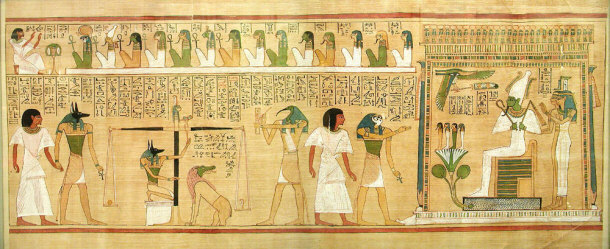
The Aztecs used pyramids as sacrificial sites since they were some of the
most sacred locations in the Aztec and Toltec cultures. According to "The
History of the Aztecs," the Aztecs determined that they had to reconsecrate the
Great Pyramid of Tenochtitlan. To accomplish this, they sacrificed over 80,000
people in the course of four days at the top of the pyramid on a human
sacrificial altar.
Aztec Ritual Human Sacrifice from the Codex Magliabechiano:
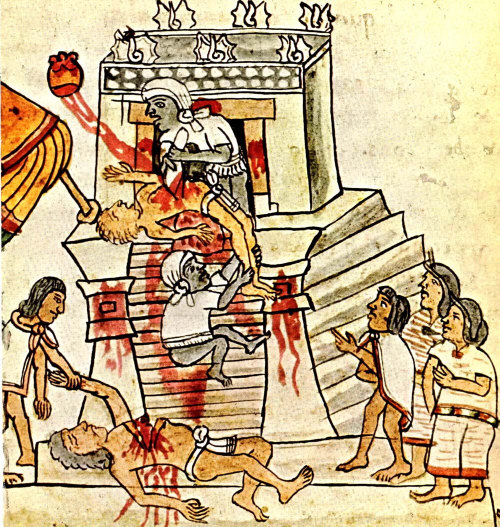
The heads were then mounted on top of the posts that were
scattered all around the pyramid. "Aztec Warfare" estimates that this was a
common practice, but this particular sacrificial altar was one of the largest.
The author, Ross Hassig, estimates that 14 sacrifices had to be made every
minute during the consecration over those four days.
10) Some People Believe the Atlanteans Built the Great Pyramids
Another popular myth about the creation of the Pyramids in Egypt. This
is referred to as "The Atlantean Conspiracy." The primary reason that people
have turned to the possibility that the Atlanteans developed the Egyptian
pyramids and the Sphinx is that they cannot explain the development of the
pyramids well using Egyptian people of that time as an archeological model.
According to "The Giza Power Plant," the Atlanteans were purported to have great
technology as first claimed by Plato and in numerous other myths. The
technology, unknown in today's world, could explain how they were able to
construct such incredible feats of architectural know-how.
Modern Representation of Atlantis:

By Rodrigo Boos
via Wikimedia Commons
Additionally, this could help to explain the other impossibilities related to
the Great Pyramid. The association with the Sphinx connects to the "The Lost
Book of Nostradamus." According to this, Nostradamus claims that the Sphinx was
created by a culture other than the Egyptians. He does not state that these were
the creations of the Atlanteans, but he does state that it would have been a
culture that no longer exists rooted in Ancient philosophies and ingenuity.
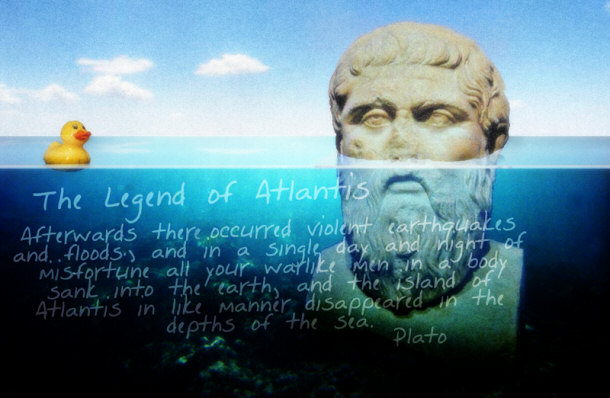
He
gave specific details about the proof such as a room beneath the paw of the
Sphinx and markings along the interior. However, the Egyptian government has
refused to allow investigators to look into the validity of these claims.
Although they claim that they have examined it for themselves and are satisfied
that the Sphinx was created by the ancient Egyptians. Unfortunately they refuse
to let anyone else see it which leaves skeptic speculation to continue to this
day.
9) Some Pyramids Are Supposedly Cursed
Even though it sounds as if it's
something out of a mummy movie, the majority of the pyramids do have curses on
them. These curses have largely been disregarded, but according to "The Curse of
the Mummies," the curses would not have necessarily been triggered by the
actions used to excavate the tombs and pyramids. Supposedly, the curses are for
those who disrespect or dishonor the pyramids. By the time that most
archaeologists have discovered the pyramids, vandals and treasure seekers had
already managed to break into them. Yet, according to "The Big Book of Curses,"
the curses themselves have no such limitations and would affect anyone who came
in contact with them. After the Tutankhamun find, many began to believe that the
archeological dig was cursed due to the ultimate grave-robbing nature of the
excavation.
According to "Did the Egyptian Pharaohs Curse Their Tombs and the Pyramids,"
the curse fulfillment is primarily anecdotal. There are accounts of the curses
and deaths that befell those who entered into the Tomb of King Tut. A lesser
known series of accounts involve those of the archaeologists excavating the
tombs along the Giza Pyramid in the 1990s. The two tombs that were disturbed
included those of Pet-et-ty and Ney-sey-seker. An earthquake destroyed one of
the excavator's home, a photographer was injured by a disintegrated ladder, the
train bringing the tools derailed for no apparent reason, and numerous diseases
and calamities befell the rest.
Anubis Figure Guarding the Entrance to Tutankhamun's
Treasury Room:
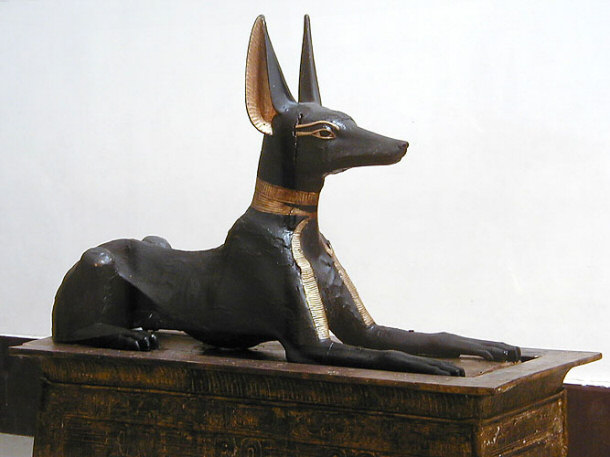
By Jon Bodsworth
via Wikimedia Commons
Zahi Hawass states publicly and in his book "The
Pyramids of Ancient Egypt" that he believes his heart attack came about because
he worked too hard, but he admits that his colleagues are still unconvinced.
8) You Will Be Shot on Sight if You Try to Enter the Chinese Pyramids
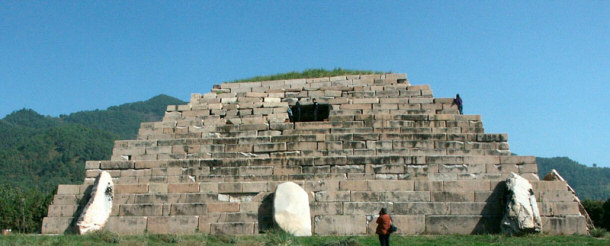
Tremendous rumors and excitement surround the Chinese Pyramids. One of the
things that feeds these, according to "Chinese Architectural Secrets," is that
the Chinese government zealously protects its pyramids. Visitors are not allowed
to enter entire segments of China. These are known as forbidden areas, but the
most protected is the Forbidden Zone. These areas are not clearly marked making
this a little interesting. It is important to understand that defending the
national treasures and locations can justify extreme and deadly force according
to Chinese law. Most of these areas can only be reached through long, winding
dirt trails through dangerous terrains. It is a very dangerous area, even
without the risks from the government and their troops. Special exceptions may
sometimes be obtained, but these can be quite difficult to get most often
involving bribing a Chinese official.
7) Human Sacrifice Took Place at the Top of Some Pyramids
Both the Aztecs and
the Mayans routinely sacrificed prisoners and other people at the top of their
pyramids. The Aztec and Mayan pyramids all had the stair stepped architecture.
At the top, the priest or priests would split the victim open in some fashion.
Sometimes this involved plunging a knife into the heart and wrenching it down
into the belly, according to "Aztec Warfare ." ."
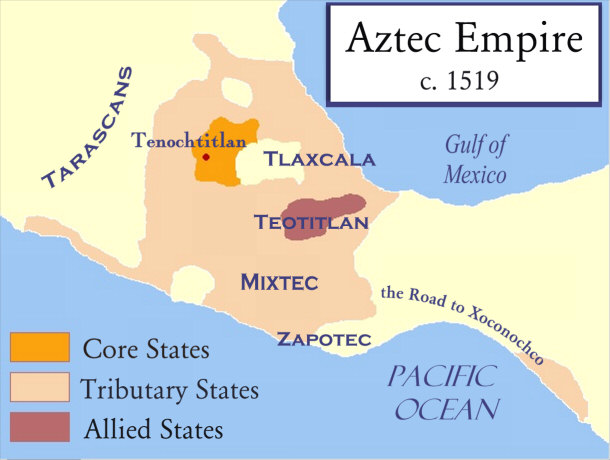
By Madman2001
via Wikimedia Commons
The most famous and largest human sacrifice as far as size and magnitude was
the reconsecration of the Great Pyramid of Tenochtitlan. More than 80,000 people
were sacrificed. According to "Aztec Warfare," most of these were prisoners of
war, captured during the battles throughout the years preceding 1487. The Aztecs
believed that the reconsecration of the pyramid would bring favor on them from
Tenochtitlan. The battles had not been going as well as the Aztecs had hoped
for. This particular sacrifice may have been one of the largest ritual
sacrifices that involve human sacrifice in world history. The heads were then
taken and stripped of their flesh.
Aztec Warfare:
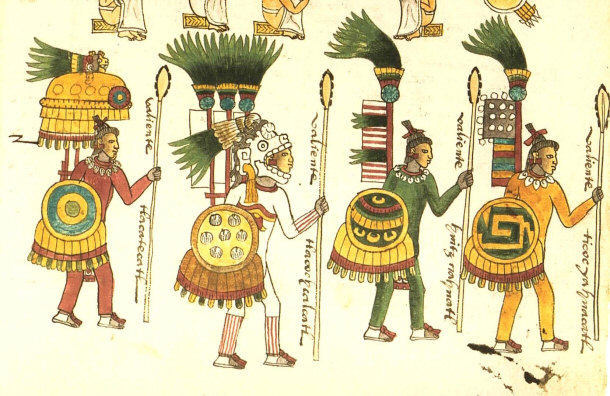
According to "Strange Rites of Ritual
Murder," the eyes and brains were sometimes consumed only minutes after the
rightful owner's heart stopped beating. There are even rumors that the greatest
of the war lords would drink the blood of their victims. It would supposedly
grant to them the power to see through their enemies' eyes, as well as the
ability to absorb the strength and vigor of all the years that were to come.
Reconsruction of the Templo Mayor of Tenochtitlan:
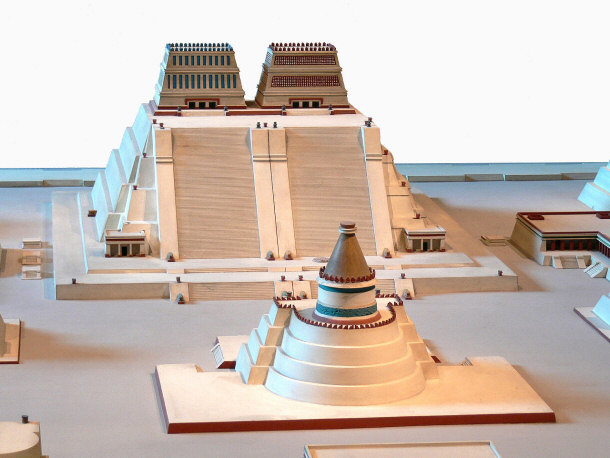
By Wolfgang Sauber
via Wikimedia Commons
More troubling, the Aztec temples and pyramids were often the site of child
sacrifices as well. This was considered the best way to ensure that the
sacrifice was truly a virgin. They generally chose a young girl. Child sacrifices occurred on the top of the temple even after
the Spanish conquest, although the sacrifices were conducted in secret to avoid
getting in trouble with the Catholic Church. Some rumors persist that the last
child sacrifice on the Great Pyramid of Cholula at some point in the 19th
century.
6) The Most Controversial Pyramid is the Great White Pyramid
According to
Chinese legend and folklore, there is a pyramid in China known as the Great
White Pyramid. Supposedly, it exceeds the height, size, and breadth of the Great
Pyramid. It was rumored to be more than 1,000 feet high. Several expeditions
have gone into China to try and learn more about this man-made archaeological
wonder. According to Biblio Tecapleyades.net, none of these expeditions have
turned up anything remotely like the Great White Pyramid.
The Great White Pyramid:
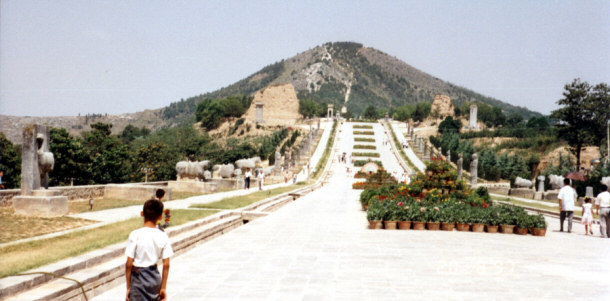
The controversy still rages on today. The controversy continues because the area of China where it is supposedly
located is known as the Forbidden Zone. Visitors are no longer allowed in this
region. The Chinese lore continues, feeding the rumor mill. There are a number
of theories regarding why it has not been seen. According to "Conspiracy
Theories of China," the most popular is that the site is covered. However, this
falls through because the satellite images and research have indicated no such
structure.
5) The Aztecs Did Not Actually Build the Pyramid of Tenochtitlan
Most people
assume that the Aztecs actually constructed the Pyramid of Tenochtitlan.
However, archaeological datings and excavations have revealed that the temple
was constructed more than 1,000 years before the arrival of the Aztecs,
predating even the Toltecs. According to "The Pyramids of the Sun and Moon," the
Aztecs believed that this was where creation was born. They revered it as one of
their most sacred sites, and they drew on the architectural style for their own
structures. According to "The History of the Aztecs," scholars believe that the
pyramid itself was covered in red paint and plastered. This was re-plastered
after ritual sacrifices, although the color was intended to match the color of
the blood.
Pyramid of the Sun:

The actual Pyramid of Tenochtitlan is actually comprised of two pyramids.
This is why it is known as the Pyramid of the Sun and Moon. The first section is
dedicated to the sun, built on top of a lava tube cave. Visitors who walk
through this lava tube will come out on the other side to a shrine to the god as
well. The second part was to the moon. In addition to this, honor and sacrifice
were paid to the goddess Chalchihuitlicue of the streams and lakes as well as
Tlaloc, god of fertility and rain. All of these gods could receive tribute, but
the sun and the moon received the best sacrifices of all.
Pyramid of the Moon:
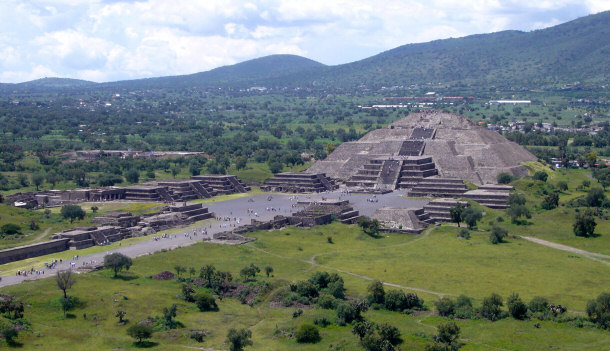
By Ineuw
via Wikimedia Commons
This pyramid is actually the location of some of the most violent and bloody
ritual sacrifices. Part of the reason that it was chosen for this was because
the Aztecs believed that their gods had sacrificed themselves at the top of the
pyramid to create the new sun over the world. They also believed that this
pyramid was also the center of the world and that at one time, all peoples
started here before warfare and rage drove them away.
4) The Great Pyramid and the Pyramids of Giza Smell Like Urine
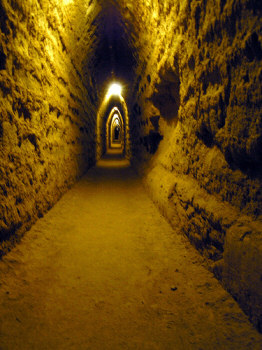 Tourists who
go through the tours through the Great Pyramid and the Pyramids of Giza have all
commented on the unusual scent that fills the pyramids. According to the book,
"The Great Pyramid," this scent baffled archaeologists and researchers at first.
Because the airflow within the pyramids is severely limited, the scent could not
be removed. It was not until later that one archaeologist discovered the dried
evidence indicating the source of the scent: urine. Tourists who
go through the tours through the Great Pyramid and the Pyramids of Giza have all
commented on the unusual scent that fills the pyramids. According to the book,
"The Great Pyramid," this scent baffled archaeologists and researchers at first.
Because the airflow within the pyramids is severely limited, the scent could not
be removed. It was not until later that one archaeologist discovered the dried
evidence indicating the source of the scent: urine.
According to "Pyramid Mysteries," there's a great deal of controversy about
whose urine scents the pyramids and their winding passageways. At first,
archaeologists and scholars postulated that it belonged to the workers, but they
quickly determined that was not likely the case because most of the workers
were slaves. They would have been severely punished for desecrating the site of
the gods and the pharaohs. Another popular theory is that vandals actually used
the temples as urinals while raiding the tombs for their treasures. The one
thing that they do agree on is that the urine is from humans. This rules out the
theory that it might be alien urine, a fact which saddened many of the alien
conspiracy theorists.

By kallerna
via Wikimedia Commons
The odor is still a problem in the pyramids to this day. They have not been
able to remove it through natural means, and they are prohibited by law from
taking additional steps to eradicate the smell since it could result in damage
to the pyramids and the inscriptions on their walls.
3) Some People Go to the Pyramids to Get Special Powers
Many people believe
that pyramids of all kinds have great powers. According to "Other Aztec Temples
and Their Beliefs," the Central and South American pyramids are supposedly
imbued with great powers. This belief is bolstered by the fact that many
adherents to this belief believe that all gods have certain quantities of
different powers. The more people follow a deity, the more the deity is
weakened. A deity who has not been worshiped for a significant period will be
able to grant the greatest powers.
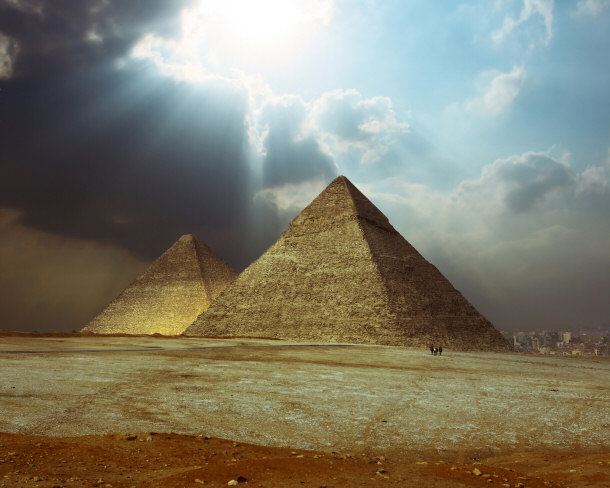
This particular practice is an offshoot of
paganism, though, according to "Neopaganism and the Modern World," this is more
appropriately referred to as post modern neopaganism. It corresponds closely
with crystal spiritualism and spirit walks. The actual rituals to gain these
powers are kept secret and revealed only to initiates. The way the pagan
movement was received by the general public is mostly due to the secretive
nature of these pagan churches and rituals.
Druids Celebrating at Stonehenge - Example of Neopaganism
at Another Historic Site:
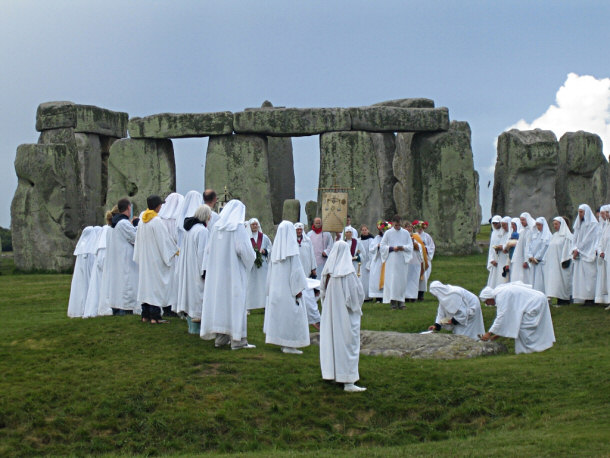
By sandyraidy
via Wikimedia Commons
2) The Great Pyramid is the Only Remaining Member of the Seven Wonders of
the World Still Standing
Both Herodotus and Callimachus made lists of the seven
wonders of the world. Although much of their notes on the manner in which they
were constructed and why these structures were chosen have been destroyed, the
basic lists have been retained. The seven wonders according to these men include
the Great Pyramid in Giza, Statue of Zeus at Olympia, Mausoleum at Halicarnassus,
Colossus of Rhodes, Lighthouse of Alexandria, Hanging Gardens of Babylon, and
Temple of Artemis at Ephesus. All of these structures with the exception of the
Great Pyramid have been destroyed over the years.
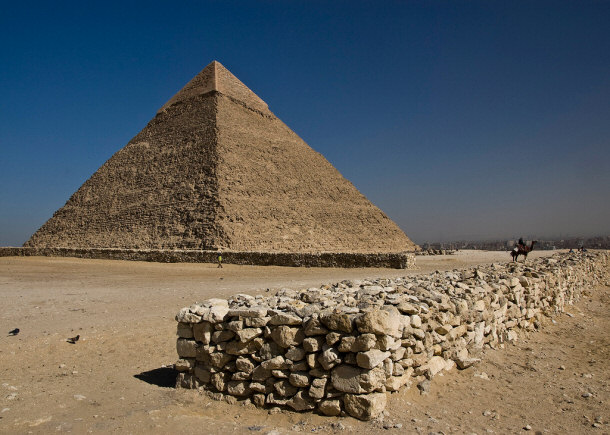
The primary reason that the
Great Pyramid has survived is the enormity of its structure. It has survived a
number of natural disasters like earthquakes, sandstorms, and conquering armies
that devastated structures like the Statue of Zeus and the Temple of Artemis. It
was not until fairly recently that the Egyptian government had to start taking
more stringent enforcement methods for tourists who tried to slip away with a
bit of the Great Pyramid.
Great Pyramid and Pyramids of Giza:
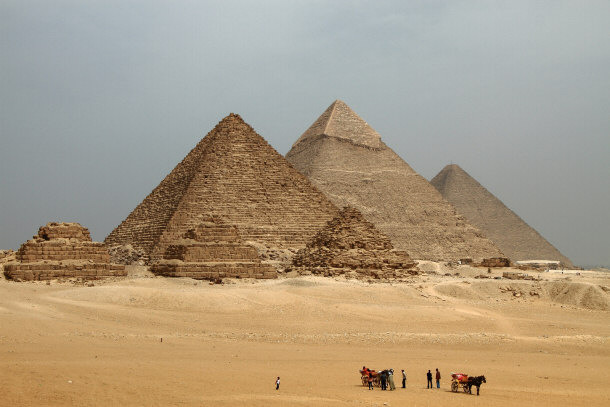
Even with so many vandals and attackers, the Great
Pyramid still remains in mostly good condition, indicating that it will probably
out live the other modern wonders of the world.
1) There Was a Real Imhotep Associated with the Pyramids
Imhotep is most
famous in modern times for his appearance in the Mummy movies starring Brendan
Frasier and Arnold Vosloo. However, the actual historic Imhotep is significantly
different, even though they were both associated with the pyramids and the
ancient Egyptian culture. Imhotep was not actually an Egyptian, but he gained
tremendous respect and power during the reigns of two pharaohs. He oversaw
tremendous architectural and administrative projects. According to "The Historic
Imhotep," he constructed one of the earliest pyramids. This temple was quite
small, but it still remains. It was constructed from small stone blocks, and it
stood at 200 feet. This pyramid is known as the Step Pyramid.
The Step Pyramid:
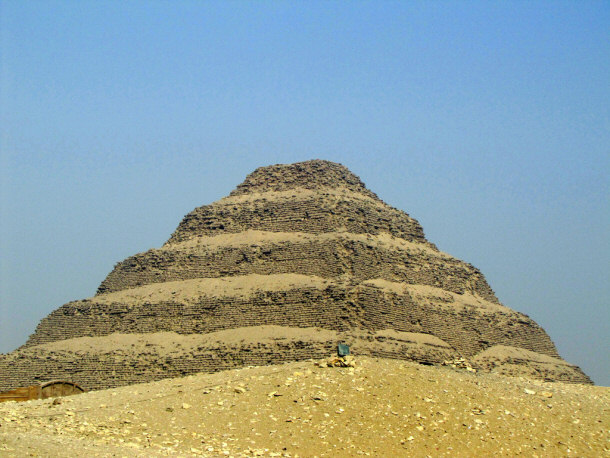
"History of Egypt"
credits Imhotep as being an even better doctor than he was an architect. One of
the ways that he got into the good graces of the pharaohs was by saving the
lives of their children.
Imhotep in Bronze with Silver Inlays:
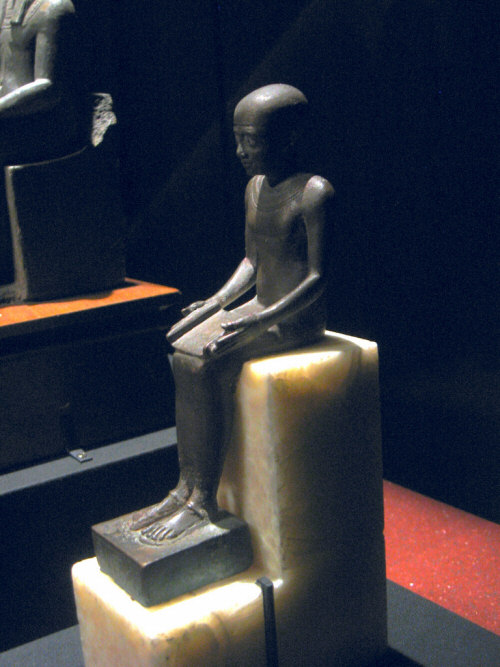
Imhotep soared to even greater prominence throughout his lifetime. According
to "The Historic Imhotep," he attained the closest level of godhood that a man
could. Even the Greeks and Romans recognized him. The Greeks thought he was the
incarnation of their healing god, Asklepios. Later on, the Romans built an
obelisk that remains standing to this day. This obelisk memorializes his medical
achievements and all of his great deeds, and it is one of the oldest memorials
outside of Egypt to Imhotep.
History
Top Lists:
15 Biggest Architectural Blunders
Top 15 Most Horrifying Terrorist Attacks
15 Fascinating Facts About the Vietnam War
Top 15 Amazing Ancient Egyptian Architecture
20 Little Known Facts About the Titanic
Top 10 Most Creepiest Abandoned Places in the World
26 Interesting Facts About Henry Ford
List of 15 Tough Ancient Warriors Through History
List of 15 Notorious Roman Emperors and Empresses
Top 15 Worst Pandemics in History
15 Things That Remained the Same in the Past 100 Years
Top 15 Things China Invented First
Top 15 Greatest Inventors in History
15 Interesting Facts About Abraham Lincoln
10 Inventors Who Stole Their Ideas
15 Stories of Hilarious Medieval Victories
15 Detectives Credited With Solving The Biggest Cases In History
15 Fascinating Facts About the Ancient Pyramids
15 Inventions That Were the Result of a Mistake
15 Famous Stories of Execution
16 Rare Facts About the U.S. Presidency
15 Astonishing Leadership Stories that Ended up Successfully
Informational:
Analysis of the Linear B tablets and Wall Paintings
Aristophanes and Classical Greek Comedy
The First War of Scottish Independence
|